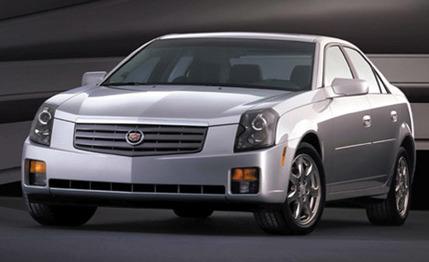
 First Drive Review
First Drive Review
The Nordschleife (" nort-shly-fuh") is what the cognoscenti call the original "north loop" of the 74-year-old Nürburgring racetrack, and it's a strange place to find a Cadillac. Nonetheless, that's where much of the ride and handling development work on the new CTS was done, so the division loaded up a bunch of automotive writers and took us to see how well the car works on this extraordinary 12.9-mile ribbon in the Eifel Mountains near Cologne.
The CTS, as you may know, is the first of the "art and science" origami-style cars to come from Cadillac, and it replaces the chromed-up Opel it has tried to sell here - with little success - as the Catera. This time the GM division is targeting serious sport-luxo sedans such as the BMW 528i, and if you want to take on that kind of car, well, you simply have to go test it where BMW tests.
Ergo, the Nürburgring, where CTS performance manager Kenneth Morris and Opel chassis development manager Michael Harder have been thrashing various camouflaged CTS prototypes to the limit, and occasionally beyond, for six weeks at a time for the past three years. Both men admit to having had off-road excursions, but that's considered normal in the pursuit of ultimate chassis-tuning objectives.
Morris says it took him 50 laps - that's 645 miles - to get comfortable with this track, and a lot more before he could hold it flat in the sections where you must completely trust your knowledge of what lies beyond.
"There are corners here where the car understeers at the entry, but a camber change in midbend tips it into oversteer. We had to tune the car to tolerate that," says Morris.
The result is a Cadillac like no other, with a ride that is firm but not abrupt, and one that resists pitch and roll without neck-snapping stiffness. As a bonus, the car has steering that is linear and readable at any speed. It's all in the tuning, and the Nürburgring experience influenced pedal positions, brake operation, and even seat design in this new CTS.
It doesn't hurt starting with sophisticated fundamentals, of course, and in this case there are long-travel unequal-length control arms and anti-roll bars fore and aft, with gas-charged Sachs monotube shocks at each corner.
On the Sport model, there will be a Nivomat self-leveling rear-suspension system, StabiliTrak handling intervention, a variable-assist Speedpro steering rack, and 17-inch wheels with V-rated rubber.
To reconcile the often-contradictory demands of handling and refinement, Cadillac's engineers employed some sophisticated techniques. The rear suspension is mounted on a rubber-isolated subframe, with a double-insulated differential; the front suspension and the steering rack - along with the engine cradle - are solidly attached to the structure for better feel and control. Aluminum control arms are used in front to reduce unsprung mass, with a hydraulic lower-control-arm bushing to improve isolation.
Naturally, the structure had to be stiff to tolerate the compromises between feel and isolation, and GM claims very high bending and twisting resistance in the CTS's unibody. Despite the tough lives led by our two prototypes (one for the track, the other - an automatic - for the road), the sense of structural solidity we noted in both was a harbinger of how stiff the production cars will be.
The only thing we reserve judgment on is the styling. Cadillac staff members are upbeat about the sharply creased CTS bodywork and seem sure it will be a hit when it arrives this January as a 2003 model priced at about $34,000. It had better be. Since all future Cadillacs will wear this new corporate look, an unfavorable market response is the end not only of the CTS but perhaps also of the division itself.
Good luck, guys.